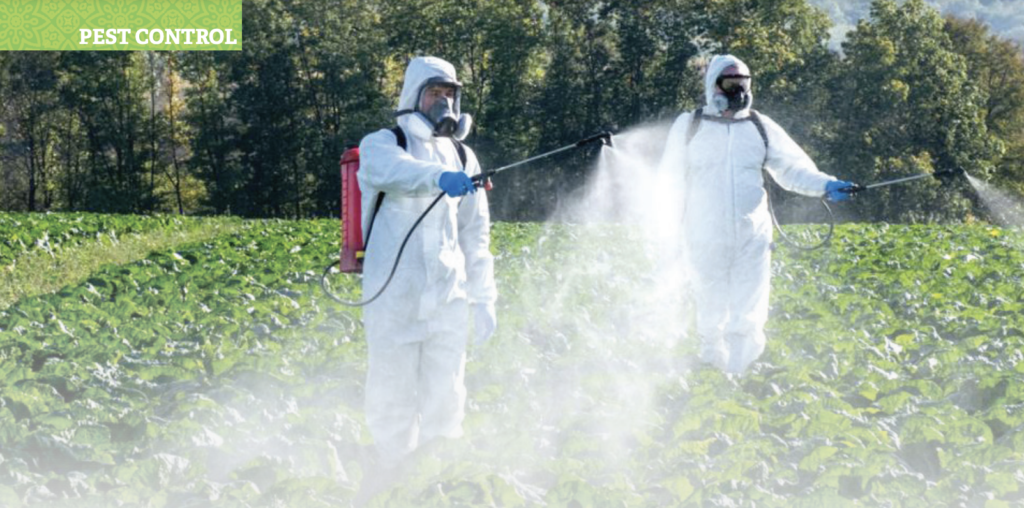By Titus Kinoti
In agriculture, pests are managed by cultural, chemical and biological means. Ploughing and cultivation of the soil before sowing reduce the pest burden. Monitoring the crop before applying insecticides and growing crop varieties which are resistant to pests are necessary to keep out the unwanted organisms on the farm.
Where possible, biological means are used, encouraging the natural enemies of the pests and introducing suitable predators or parasites. In homes and urban environments, the pests are the rodents, birds, insects and other organisms that share the environment with humans, and that feed on grains and other foods. Control of these pests is through exclusion, repulsion, physical removal or chemical application means.
As long ago as 3000 BC in Egypt, cats were used to control pests of grain stores such as rodents. The conventional weed control methods included destroying weeds by burning them or ploughing them under.
Techniques such as crop rotation, intercropping and the selective breeding of pest-resistant cultivars have been practised for a long time. Modern pest control was stimulated by the spread across the United States of the Colorado potato beetle. After much discussion, arsenical compounds were used to control the beetle and the predicted poisoning of the human population did not occur. This led to a widespread acceptance of insecticides across the continent. With the
industrialisation and mechanisation of agriculture in the 18th and 19th centuries, and the introduction of the insecticides pyrethrum and chemical pest control became a common practice. Biological pest control is a method of controlling pests such as insects and mites by using other organisms. It was first recorded around 300 AD in China, when colonies of weaver ants were intentionally placed in citrus plantations to control beetles and caterpillars.
In the 1880s, ladybirds were used in citrus plantations in California to control scale insects. The efficacy of chemical pesticides tends to diminish over time. This is because any organism that manages to survive the initial application will pass on its genes to its offspring and a resistant strain will be developed therefore developing resistance.
The earliest documented chemical pesticide compounds were elements such as sulfur, heavy metals and salt. The use of elemental compounds for pest control started at the dawn of agriculture and has continued, in some cases, to the present day. The heavy metal compounds were probably first employed as pesticides because of their high toxicity. Arsenic compounds (particularly Arsenic (III) oxides) were found to be highly toxic to insects, bacteria and fungi.
The benefit of these inorganic pesticides, at the time, was that they lasted a long time and were not easily degraded. Unfortunately, they often leached into the ecosystem, wreaking havoc on local wildlife and posing a health threat to its human inhabitants.
The 19th century marked the dawn of manufactured chemical pesticides, when chemicals began to be extracted from their botanical sources and were purified in laboratories. It was at this time that nicotine compounds were purified from tobacco, pyrethrums were extracted from flowers, and rotenone isolated from roots.
During this era, chemical compounds were blended and produced for the purpose of pest control. In 1814, an inorganic compound of copper (II) acetoarsenite called “Paris Green” was introduced as a pigment. By 1867, Paris Green was widely sold as an insecticide and rodenticide. The humble beginnings of simple, natural repellents and physical pest controls grew into chemical and agricultural industries seeking out new and improved methods.
The primitive tools now had scientific reasoning to explain their efficacy and identify their chemical formulations, moving them from the realm of natural extracts to synthesised pesticides, and signalling the rise of the chemical pesticide revolution. Pest control, which had begun with simple tools and methods, was refined over centuries and completely reborn during World War II. The late 19th and early 20th century world of the first synthetic organic chemicals gave rise to the first modern synthetic pesticides in the form of organochloride compounds.
Many organochloride compounds, such as BHC and DDT, were first synthesised in the 1800s, but their properties as insecticides were not fully discovered and exploited until the late 1930s.
BHC (Benzene hexachloride) was first produced by the English scientist Michael Faraday in 1825, but its properties as an insecticide were not identified until 1944. DDT (dichlorodiphenyltrichloroethane) was first prepared by Othmar Ziedler, an Austrian chemist, in 1825, but the Swiss chemist Paul Hermann Müller did not discover DDT’s insecticidal properties until 1939 — a discovery that led to Müller’s award of the Nobel Prize in 1948.

